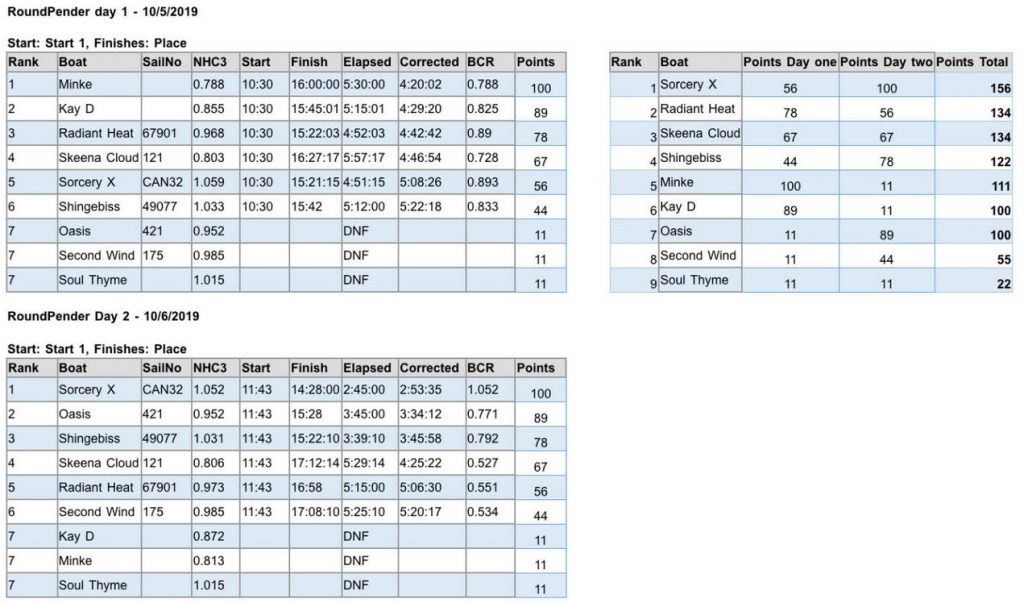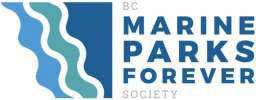Round Pender’s Race
Day One
Our single-handle Round Pender’s Race is always a club favorite. We race to Port Browning marina, enjoy some appetizers, have dinner at the pub, and race home the next day. The first day is ‘skipper’s choice’ as to whether to sail around the east or west side of Prevost. The distance is the same. What we do on the return trip, circumnavigate Pender Island, or return home the same way is decided the next day at breakfast. It is always a lengthy and deliberate decision as many of us are jump starting our brains with multiple cups of coffee. It is always a longer night than most of us are used to. Although I do notice bedtimes are not as late as they once were. I like to think it is because we are getting smarter. But truth be told; I think not.
The first day was a perfect sailing day for Skeena Cloud. The winds were light – anywhere from 2 to 8 knots – with adverse tides. Why would this be good for me? Because it kept many of the people I respect most in sailing, both for their skills, and their nature, close to me, where I could feel like I was competing, while watching and learning.
The race was started by Kim on Nest Egg, who joined us as Committee Boat under sunny skies and a light breeze. Light, but was enough to convince us we could start the race at the club, instead of moving the start out to Ganges Shoal. As usual, the wind fooled us, dropping to almost nothing after the start. But we were all able to tack out of the harbour.
Once clear of Second Sister, we faced a critical decision: go through Captain’s Pass on the ebb current, or challenge that same current by keeping Prevost Island to port. Minke, Kay D, Oasis, and Second Wind chose to head through Captain’s Pass. Radiant Heat, Sorcery X, Shingebiss, Skeena Cloud, and Soul Thyme chose to head down towards the Channel Islands.
The next I heard from Second Wind and Oasis was at 14:45 on the VHF when they grumbled that if they weren’t able to escape Captain’s Pass by 15:00, they were going to resort to motoring. And they did.
Kay D made two valiant attempts to get through the Pass. Conceding defeat, he turned around, followed by Minke, and sailed out of the Pass, and down the the inside of Prevost, eventually passing me. How is that for skill and persistence on behalf of both?
Rounding Point Liddell at the bottom of Prevost, I could see Sorcery X passing Portlock Point and entering Navy Channel. Shingebiss was two thirds of the way there. Soul Thyme appeared to be caught in little wind and adverse tide in Otter Bay at the top of Pender. Radiant Heat must have already cleared into Navy Channel.
Kay D was just ahead of me and Minke just behind at Point Liddell. And I went to school. I watched Kay D sail out into the middle of the channel. Why was he doing this instead of cutting the corner and heading directly to Navy Channel? But it’s Martin; I am not second guessing him. When Martin finally turned towards Navy Channel, with me following like his dog, I saw why. We were being rapidly set back upon the reef guarded by the Point Liddell Light. Without the clearance we clawed by continuing to sail upwind instead of falling off the wind and hoisting our spinnakers, I would have had some nail biting moments.
But this long route to Navy Channel was relatively slow. We were going decidedly faster than poor Soul Thyme, but still slow compared to Minke’s brilliance. Remember, I was well ahead of Minke turning the corner. Instead of sailing out and around like us, Minke hoisted his spinnaker and sailed ‘hot’ and fast across the bottom of Prevost. Where we were in the wind shadow of Pender and facing contrary currents, Minke was in good wind and protected from the worst of the current. Brilliant!
Soul Thyme finally escaped Otter Bay and was slightly ahead of me. The rest of the fleet had turned into Navy Channel heading for the second short course mark at Conconi Reef. Here the wind faltered. Soul Thyme had to turn on her engine to avoid ending up on beach after clearing Stanley Point. I was able to drift around and finally picked up enough wind to clear Conconi Reef and then had some nice wind to, and past, Wane Island. I might have been last, but I wasn’t lonely, shepherded as I was by a pod of harbour porpoises feeding around me, and watching a Sea Lion noisily dispatch a nice chum salmon to the delight of the seagulls.
The race was called for time, so Conconi Point became the finish line. I was piped in around Razor Point by someone playing the bagpipes on the rocks above me. The whole day was near perfect.
I stowed my gear as I motored in, anticipating good friends, appetizers, and a cold beer.
Almost Round Penders, Day 2
It was decided, after the coffee dissolved our cobwebs, that the lack of wind and adverse tide precluded racing around the bottom of Pender Island to complete a circumnavigation of the Penders. Instead, we opted for sailing back the same way we came.
The start was an awful affair for Skeena Cloud. Kim started us well in a fitful breeze but I managed to get myself into ‘irons’ as I turned for the line. Slowly drifting around in a lazy circle, I expected to find myself alone, but coming full about, there was the rest of the fleet: in about the same place I last saw them. Well, that worked out so well, I decided to do it again and embarked upon another embarrassing circle. This time I knew I would find myself facing a long, lonely sail home. But as the fleet, one by one, slowly came into sight, they were closer, not further away.
Tony on Minke wisely suggested, noting that he would soon be passed by an anchored freighter, that we restart the race at Conconi Reef. He was roundly applauded and we motored to the reef, where we found ourselves in a nasty adverse current and no wind. We decided to carry on to Portland Point and try our luck there.
Arriving at Portland Point there indeed was some breeze from the NNE filling in as far as you could see up Trincomali Channel. Keith on Soul Thyme came on the radio and suggested a ‘Jack Rabbit’ start. Wonderful idea! Now what the heck is a ‘Jack Rabbit’ start? Greg on Sorcery X kindly explained it in a way any idiot could understand. As did Keith, using his radio, which in my defense, I had trouble hearing. What neither counted on was that I am not just any kind of idiot.
It seems that in a ‘Jack Rabbit” start the FCR takes off on a port tack with the boats lined up windward of him. They each cross his stern with inches to spare on a starboard tack. When the FCR finally comes on to starboard, no one should have much of an advantage.
Martin explains it beautifully in his description at the end of this report.
Okay, I thought, I have this. Then someone warned about us about the ferry travelling to Vancouver that would soon cross in front of us. Then someone said he heard the Victoria ferry sounding its horn in Active Pass and maybe we should wait for it. Should we wait? No, let’s go for it, time’s a wasting. We could wait all day for no ferries on a Sunday. So your intrepid FCR sailed to where he was told, turned onto a starboard tack, nicely bisecting the fleet.
Those who were aware of the idiot I can be were to leeward of me. Those who were where they should be were to windward of me. These poor souls had to sail downwind to cross my track before turning upwind to cross it again and legally start their race. Martin, who is not easily fooled, sailed as is recommended in his explanation of how to properly conduct a ‘Jack Rabbit’ start, within inches of my quarter. Looking back over my stern, Kay D disappeared beneath it. It was a thing of beauty.
We all raced up Trincomali Channel in a light but steady breeze. Sorcery X took the Prevost shore. Kay D, Second Wind, and Skeena Cloud played chicken with Enterprise Reef, and the rest did something that put their skills and experience on full display.
Their courses took them to port of the green can at the end of Enterprise Reef and over to the Mayne Island shore. There was less wind over there but it also took them out of the strong ebb coming out of Active Pass. Protected by the Mayne Island shore they sailed up towards Helen Point and then across the mouth of Active Pass (which I thought showed some cojones as they weren’t going very fast) and over to the Galiano shore. Radiant Heat, in the lead, looked like he stopped for a few minutes to discuss the weather with a sport’s fishermen. He was followed by Shingebiss, Oasis, Minke, and Soul Thyme.
Once to the Galiano shore they were spat out across Trincomali towards Peille Point. Oh, it was a thing of beauty: almost. I will come back to them.
Meanwhile, Second Wind and Skeena Cloud were in a slow motion tacking duel, with Skeena Cloud on starboard. I thought it would be unkind to give Eric quarter, so I didn’t.
Kay D, in his Flying Fifteen was tacking beyond Enterprise Reef, in front of Active Pass. There were ferries to the left of us; ferries to the right. I closed my eyes and could see myself speaking at Martin’s funeral, “he is now sailing with the faeries, after sailing with the ferries.
The short course was Peile Point. The finish time was 16:30. Sorcery X, even with the dying breeze, made it through Captain’s Pass to within 100 yards of the finish line at Ganges Shoal, but no further, before time expired.
Shingebiss, Oasis, and Radiant Heat sat just outside of Peile Point for the longest time. Radiant Heat called in to ask, “when can I say I have crossed the line”. Greg on Sorcery X suggested when the Point is bearing due south. ‘Good’ Tony answered. ‘that’s where I am, and have been, for some time”.
Typically, one goes to the bow of the boat to take your time crossing the finish line. I watched Bob on Oasis take his time looking down over his stern as he drifted by the Point. At least I thought he was. He told me later that he was watching the rocks sliding just below his rudder as he, with engine idling, drifted stern to, ever so slowly, by the Point. I heard Shingebiss did the same.
Second Wind and Skeena Cloud, knowing that once others had crossed by Peile Point by 16:30, that we had until 18:30 to do the same. It took us awhile, having to sail one-third of the way to Montague, (we did not so much sail as drift with intention), but we both made it.
It was a wonderful two days of racing, being on our boats, hanging out with friends, learning, and just being on the water. Thanks to Kim on Nest Egg for joining us.
And thanks to everyone else who came out.

How to conduct a ‘Jack Rabbit’ start: Martin Hebert
https://www.glenmoresailingclub.com/Rabbit-Starts
And here are some observations that might help people get a good rabbit start. The Rabbit should start on Port and sail close hauled and as fast as possible. the fleet should be gathered to starboard of the rabbit and his lay line, upwind. The rabbit start gives everyone the opportunity of starting in second place and one tack maneuver ahead of the first place boat. The tactic is to wait until the rabbit is approaching, you are some distance away from the lay line he is sailing towards. Sheet in and get the boat to full speed on a close reach and round the stern of the rabbit about six inches away, slowly easing up to close hauled as you pass astern. You are now exactly one boat length behind him and he has to do a tack eventually which will put you even or ahead depending on his tacking skill.
What can go wrong?
- If you set up to windward of the rabbits lay line then you have to approach downwind, slow and do a gybing maneuver, slower, and then head all the way up, even slower. By this time you start you are wallowing and about ten boat lengths behind.
- If you line up close to another boat to windward and he forces you down, blankets you or gives you dirty air. Stay away from other boats and start one boat at a time. This way everyone has an identical start, one boat length behind the rabbit and with good speed.
- if you are caught on the wrong side of rabbit and cannot make the start the penalties are severe, check the GSC link above, so pay attention to the rabbits lay line.
The rabbit starts on Port so that an earlier starter cannot tack over into right of way position and turn things into chaos.
Rabbit starts are typically used in large fleets of one design boats and are very effective in getting a competitive first weather leg. Good starters don’t like them as they equalize the start so much. In handicap racing there are a few tactical considerations to consider, one being the speed of the rabbit.
If the rabbit is a fast boat then it is best to start later if you are a slower boat (then the first minute of the beat you are actually sailing at the faster speed of the rabbit). If the rabbit is a slower boat you should start earlier on the reverse theory of the above. If you see a whole bunch of boats on the wrong side of the layline you should also start early because all of those boats are going to pass to windward of the rabbit giving him dirty air and causing him to slow down.
The rabbits job is to have nerves of steel and sail as fast as he can to windward. He should not even look at the fleet or imagine how close they are passing to his stern quarter. If someones bow wave splashes him he should not flinch but keep sailing hard.





